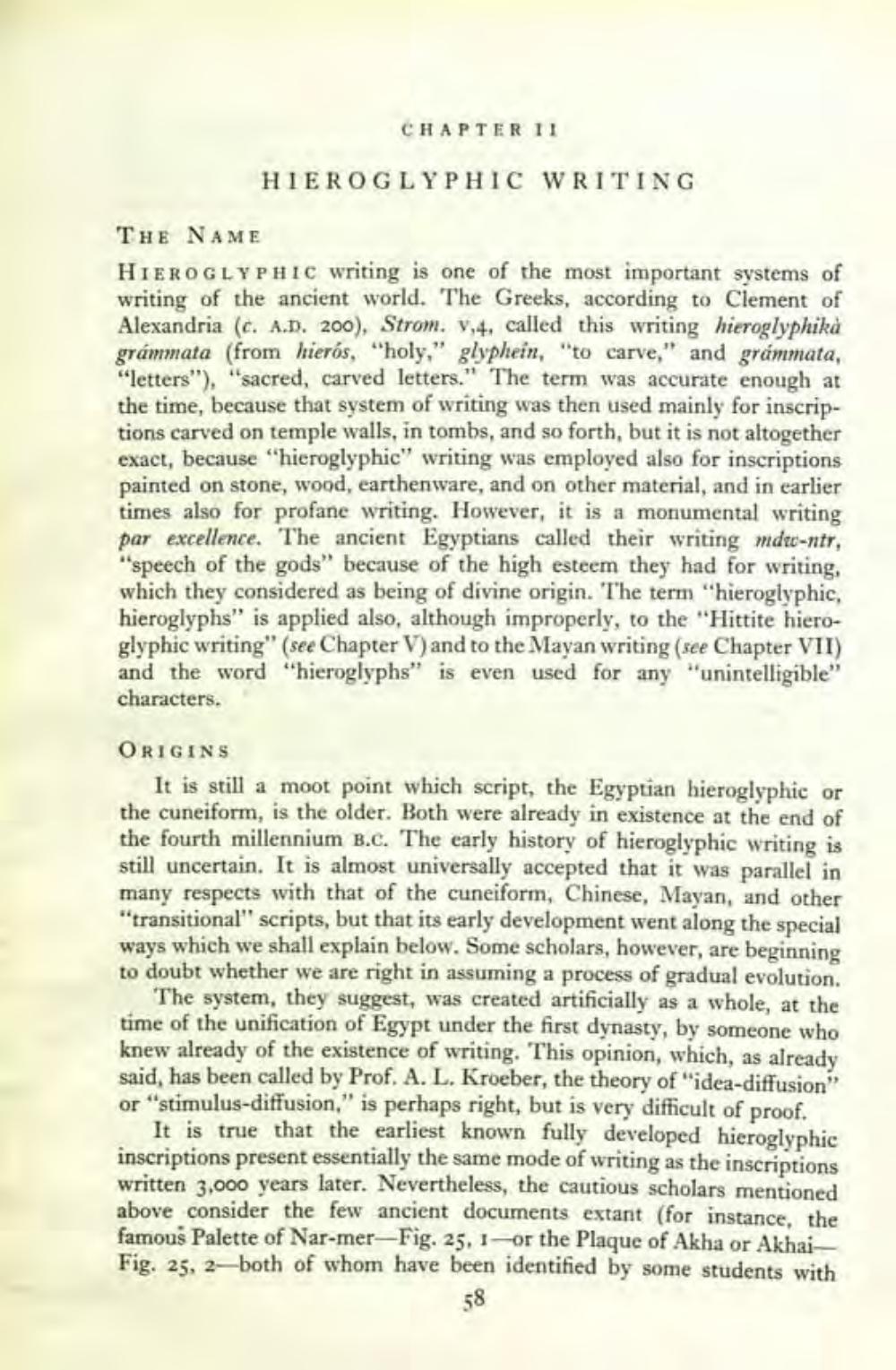________________
CHAPTER II
HIEROGLYPHIC WRITING
THE NAME HIEROGLYPHIC writing is one of the most important systems of writing of the ancient world. The Greeks, according to Clement of Alexandria (c. A.D. 200), Strom. V, 4, called this writing hieroglyphika grámmata (from hierós, "holy," glyphein, "to carve," and grámmata,
letters"). "sacred, carved letters." The term was accurate enough at the time, because that system of writing was then used mainly for inscriptions carved on temple walls, in tombs, and so forth, but it is not altogether exact, because "hieroglyphic" writing was employed also for inscriptions painted on stone, wood, earthenware, and on other material, and in earlier times also for profane writing. However, it is a monumental writing par excellence. The ancient Egyptians called their writing mdro-nir, "speech of the gods" because of the high esteem they had for writing, which they considered as being of divine origin. The term "hieroglyphic, hieroglyphs" is applied also, although improperly, to the "Hittite hieroglyphic writing" (see Chapter V) and to the Mayan writing (see Chapter VII) and the word "hieroglyphs" is even used for any "unintelligible" characters.
ORIGINS
It is still a moot point which script, the Egyptian hieroglyphic or the cuneiform, is the older. Both were already in existence at the end of the fourth millennium B.C. The early history of hieroglyphic writing is still uncertain. It is almost universally accepted that it was parallel in many respects with that of the cuneiform, Chinese, Mayan, and other "transitional" scripts, but that its early development went along the special ways which we shall explain below. Some scholars, however, are beginning to doubt whether we are right in assuming a process of gradual evolution.
The system, they suggest, was created artificially as a whole, at the time of the unification of Egypt under the first dynasty, by someone who knew already of the existence of writing. This opinion, which, as already said, has been called by Prof. A. L. Kroeber, the theory of "idea-diffusion" or "stimulus-diffusion," is perhaps right, but is very difficult of proof.
It is true that the earliest known fully developed hieroglyphic inscriptions present essentially the same mode of writing as the inscriptions written 3,000 years later. Nevertheless, the cautious scholars mentioned above consider the few ancient documents extant (for instance, the famous Palette of Nar-mer-Fig. 25, 1--or the Plaque of Akha or AkhaiFig. 25, 2-both of whom have been identified by some students with
58




